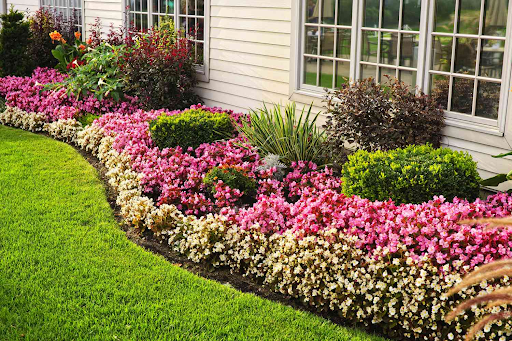Flowerbed borders have long been a well-liked landscaping element, and their use of them in residential landscaping is still becoming more and more popular. The types of materials utilized for flowerbed borders have changed as a result of the recent increase in interest in natural and sustainable resources.
To give their gardens a more natural and organic appearance, many homeowners are now using materials like rocks, wood, and natural stone. In addition, it is becoming more popular to use recycled and repurposed materials for borders, such as reclaimed wood or ancient bricks, which not only look fantastic but are also better for the environment.
More organic and fluid shapes, as opposed to rigid and straight lines, are being used as borders in design. This gives the garden, which is highly popular, a more natural and relaxing atmosphere. Other inventive uses for flowerbed borders include incorporating them into outdoor living areas, enclosing raised garden beds with them, and constructing paths or walkways through gardens.
Table of Contents
Variety of materials used in the making of Flowerbed Borders
For the purpose of creating border edging, a wide range of materials can be employed, such as:
Stone:
Natural stone can be used to make stunning and long-lasting borders, such as granite, limestone, or sandstone.
Bricks:
Bricks can be put in many different designs and a variety of colours to create a distinctive flowerbed border.
Wood:
Because it is relatively affordable and simple to work with, wood is a common material for borders. Popular options for wood borders include cedar, redwood, and pressure-treated pine.
Concrete:
To make a unique garden border, concrete may be sculpted into a variety of shapes and colours. It is a tough material.
Metal:
Metal borders can give your garden a contemporary, industrial aspect. Examples include those made of steel or aluminium.
Plastic:
Plastic borders are lightweight, inexpensive, and available in a selection of hues and designs.
Rocks:
You may use rocks of all different sizes and shapes to erect a border that appears to have grown naturally into the terrain.
Mulch:
Mulch can be used to make a garden border that is both useful and attractive. It is a natural substance that can help keep moisture in the soil and keep weeds at bay.
Advantages of flowerbed borders
Using flowerbed borders in your yard has a number of benefits, including:
Organization and definition:
Flowerbed borders can aid in defining the boundaries of your garden, giving it a tidy appearance. Moreover, this can help keep plants contained and stop soil erosion.
Aesthetics:
It can improve the aesthetics of your landscaping and provide visual interest to your landscape. Your plants and greenery will show out more if you have a flower border edging that matches their design and colour.
Weed suppression:
By creating a physical barrier that makes it difficult for weeds to establish themselves, borders can assist prevent weeds from growing in your garden.
Maintenance:
By keeping plants within a border, you can cut back on how often you must weed and prune. You could save time and work by doing this when caring for your garden.
Water conservation:
Flowerbed Borders can assist the soil to retain moisture, which will be good for your plants and save you water.
Protection:
In some circumstances, borders can shield your garden from stray animals or people who can harm your plants, like dogs or wild animals.
Final words
Flowerbed borders are trending in the direction of designs and materials that are more natural and environmentally friendly, which helps to create an outdoor setting that is laid-back and inviting.

